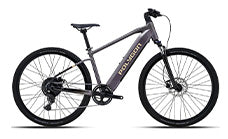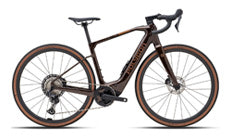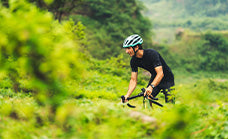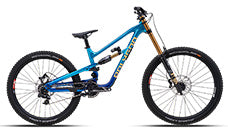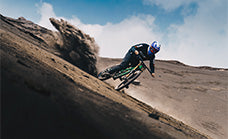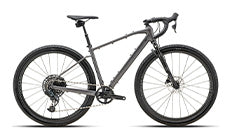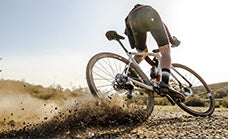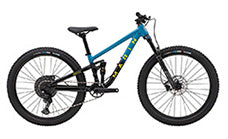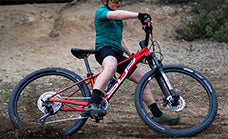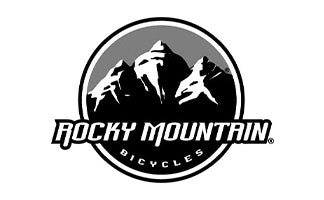Beginner’s Guide to Mountain Biking: Start Your Trail Adventure
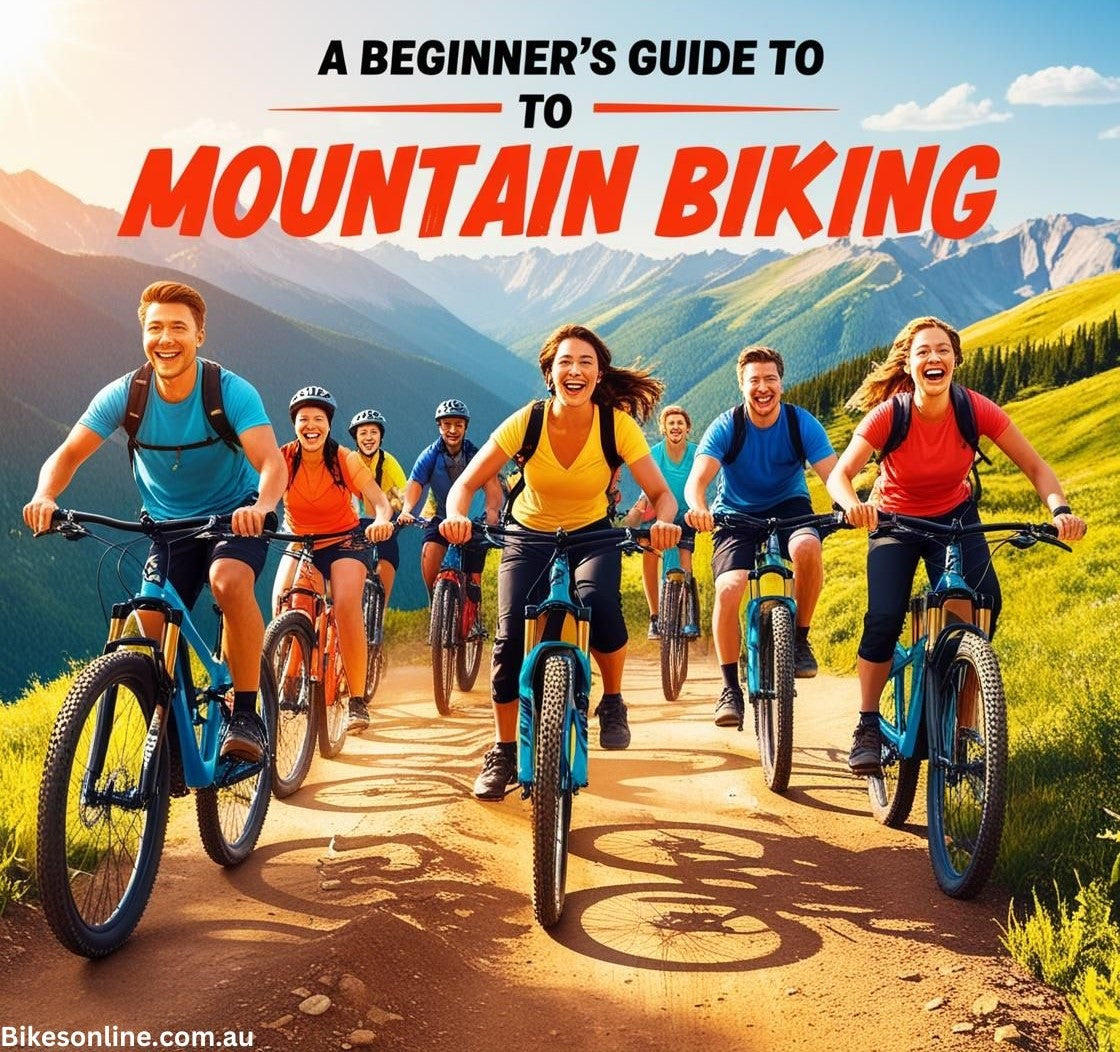
Mountain biking isn't just a sport; it's an adventure that combines fitness, skill, and the thrill of exploring the outdoors. Whether you're powering up a rugged climb, weaving through forest trails, or descending steep terrains with precision, each ride offers a unique experience that can improve both your physical and mental well-being. Globally celebrated for its versatility, mountain biking appeals to enthusiasts of all ages and abilities, offering a variety of terrains that challenge and excite. From serene forest tracks to challenging mountain paths, the sport provides an exceptional way to connect with nature while pushing your limits. Embrace the journey as we guide you through the essentials of mountain biking, ensuring you start your trail adventures on the right pedal.
Choosing the Right Mountain Bike
Understanding Different Types of Mountain Bikes
Selecting the right mountain bike is crucial to enhancing your riding experience and ensuring safety on the trails. Mountain bikes are designed with specific terrains and riding styles in mind, and understanding the differences between them can help you make an informed choice.
Cross-Country Bikes: These bikes are built for speed and efficiency over varied but not excessively rough terrain. They usually have lighter frames and less aggressive suspension systems, making them perfect for longer rides where endurance and speed are key. Ideal for riders who enjoy racing or long-distance journeys on relatively smooth trails.
All-Mountain Bikes: As the name suggests, all-mountain bikes are versatile and suitable for a wide range of terrains. They have sturdier frames and better suspension than cross-country bikes, which allows them to handle both steep climbs and technical descents effectively. These are a great choice if you're looking for a single bike that can do it all.
Downhill Bikes: These bikes are designed for aggressive riding on the steepest and most technical terrains. They feature heavy-duty frames, advanced suspension systems, and are generally heavier, prioritising stability and shock absorption over climbing efficiency. Downhill bikes are ideal for riders who focus on descents and are less concerned with pedaling uphill.
Tips for Selecting the Right Type:
- Consider Your Riding Style: Are you looking to race, or is leisure more your pace? Your intended riding style will heavily influence the type of bike you should choose.
- Assess the Terrain: Evaluate the typical terrain you plan to ride on. Smooth and flat trails might require a different bike compared to rocky and steep mountainous areas.
- Budget and Quality: Decide on a budget but remember that higher-quality components can significantly enhance your riding experience and safety. It's often worth investing a bit more for durability and performance.
- Test Rides: Whenever possible, test different bikes. This can be the best way to feel the difference in handling and comfort between types, helping you find the perfect match for your adventures.
By carefully considering these factors, you can select a mountain bike that not only matches your riding ambitions but also delivers a thrilling and safe experience on the trails.
Key Features to Consider
When selecting a mountain bike, certain key features can significantly affect performance, comfort, and durability. Understanding these can help you choose a bike that best fits your needs and enhances your riding experience.
Suspension: One of the most critical features for a mountain bike is its suspension system. There are generally three types:
- Rigid: No suspension. These bikes are lighter and easier to maintain but are less comfortable on uneven terrain.
- Hardtail: Suspension at the front only. Offers some shock absorption for the front wheel, which reduces arm fatigue and helps maintain control over rough terrain, suitable for moderate trails.
- Full Suspension: Both front and rear suspension. The best choice for very rough and uneven trails, as it offers the most comfort and control by absorbing significant amounts of shock.
Wheel Size:
- 26-inch Wheels: Once the standard, these wheels are now less common. They accelerate quickly and are highly maneuverable.
- 27.5-inch (650b) Wheels: Provide a good balance between responsiveness and obstacle traversal, making them a popular choice for all-mountain and trail bikes.
- 29-inch Wheels: Offer the best obstacle rollover capability, which makes them ideal for long-distance rides and over rough terrain. They can be slower to accelerate but provide a smoother ride.
Frame Material:
- Aluminum: Most common due to its good balance between strength, weight, and cost.
- Carbon Fiber: Lighter and stronger than aluminum but more expensive. It's the preferred choice for high-end bikes because of its vibration-absorbing properties and strength.
- Steel: Highly durable and offers a smooth ride thanks to its natural flex, but it's heavier.
- Titanium: Combines the benefits of light weight and strength with corrosion resistance, though it is typically the most expensive.
Bike Fit and Size:
- Importance of Bike Fit: A properly fitted bike can drastically improve your comfort and handling on trails. Poor fit can lead to inefficiency in riding, quicker fatigue, and potential injuries.
- Getting the Right Size: It's essential to consider both the frame size and the adjustment of the seat, handlebars, and pedals. Typically, bike sizes are based on the rider’s height, but it's best to check specific sizing charts provided by bike manufacturers.
- Professional Fitting: If possible, get a professional fitting at a bike shop. This can include adjustments to the seat height, handlebar height, and even the crank arm length, which are all critical to optimising performance and comfort.
By focusing on these key features when selecting your mountain bike, you ensure that your investment not only supports your riding style and terrain but also enhances your overall mountain biking experience.
Essential Gear and Equipment
Safety Gear that’s a Must
When embarking on mountain biking, equipping yourself with the right safety gear is paramount to ensure a safe and enjoyable experience.
Helmet: The most crucial piece of safety equipment; a good helmet can be the difference between a minor mishap and a serious injury. Look for helmets specifically designed for mountain biking, as they provide better coverage and protection suitable for the varied impacts associated with off-road cycling.
Gloves: Full-fingered gloves not only protect your hands from scrapes and bruises but also improve grip and control over your bike. They can help absorb vibration and prevent blisters during long rides.
Appropriate Clothing: Wear clothing that is comfortable yet durable. Mountain biking clothes should be breathable to keep you cool and designed to withstand the rough nature of trail riding. Padded shorts can provide additional comfort on long rides.
Protective Eyewear: Glasses or goggles protect your eyes from dust, debris, and wind, enhancing visibility and preventing any foreign material from causing distractions or harm.
Hydration Systems: Staying hydrated is vital, especially on longer rides or in warmer climates. Hydration packs are more practical than water bottles as they provide easy access to water without needing to stop or reach awkwardly while riding.
Additional Equipment for the Ride
Besides the basic safety gear, carrying the right tools and equipment can help you handle most common mechanical issues or breakdowns on the trails.
Multi-Tools: A good multi-tool can be a lifesaver. It should include at least Allen keys, screwdrivers, and a chain tool. These tools will allow you to adjust your bike's seat, handlebars, and other components or perform a quick fix if something goes wrong.
Spare Tubes or a Patch Kit: Whether you opt for spare tubes or a patch kit depends on your preference for carrying weight versus the ease of making a repair. Either way, being prepared for a flat tire is essential.
Pump: A mini pump is a necessary addition to your mountain biking kit. Some models can be attached directly to your bike frame, ensuring you’re always prepared to inflate a tire whether using a new tube or fixing a puncture.
Beginner-Friendly Gear Brands: For those new to the sport, brands like Shimano, Specialized, and Trek offer high-quality, reliable gear tailored to beginners. These brands are known for their durability and user-friendly design, making them excellent choices for new mountain bikers.
Equipping yourself with these essential items will not only enhance your safety but also increase your confidence on the trails, allowing you to fully enjoy the mountain biking experience.
Basic Riding Techniques
Mastering Balance and Control
Good balance and bike control are fundamental to safe and enjoyable mountain biking, particularly when navigating diverse and challenging terrains.
Exercises to Improve Balance:
- Track Standing: Practice holding your bike stationary without putting your feet down. This improves your ability to balance at low speeds or when coming to a stop on the trail.
- Slow Riding: Try riding as slowly as possible along a straight line or around obstacles. This teaches fine control over the bike and helps build muscle memory for balance.
Handling Your Bike in Different Trail Conditions:
- Loose Surfaces: On sandy or gravelly trails, keep your weight back and allow the bike to move slightly beneath you. This flexibility helps maintain traction and control.
- Wet or Muddy Conditions: In slippery conditions, focus on smooth control inputs and avoid sudden changes in speed or direction to maintain grip.
- Steep Descents: Lower your center of gravity by standing up off the saddle, leaning back, and keeping your weight over the rear wheel, which increases stability and control.
Braking and Shifting Gears
Efficient braking and knowing when to shift gears are crucial to handling your bike effectively across different terrains and inclines.
Techniques for Effective Braking:
- Controlled Braking: Use both brakes simultaneously but with varying pressure. Typically, the front brake provides more stopping power, but relying too much on it can cause the front wheel to lock up. Learn to modulate your braking based on the terrain.
- Braking Before Turns: Always reduce your speed before entering a turn rather than during the turn to avoid skidding. Braking before obstacles and turns helps maintain control and speed through technical sections.
Optimal Gear Shifting:
- Anticipating Terrain Changes: Shift gears before you start climbing or descending. Shifting under load (while pedaling hard) can cause the chain to skip or damage the drivetrain.
- Maintaining Cadence: Try to keep a steady cadence (pedal rotation speed) by shifting gears to adapt to changes in terrain. This helps conserve energy and keeps the bike moving efficiently.
- Listening to Your Bike: Learn to listen to the sound of your chain and gears. Noise can indicate that it’s time to shift to a more suitable gear for the terrain or that your bike might need maintenance.
Mastering these techniques will not only make your rides smoother but also more enjoyable as you gain confidence in your ability to handle various situations on the trails.
Trail Etiquette and Safety
Understanding Trail Etiquette
Mountain biking involves shared trails where understanding and following trail etiquette ensures safety and enjoyment for all users.
Right of Way on Australian Trails:
- Hikers and Pedestrians: Typically, bikers are expected to yield to hikers and pedestrians. Slow down and communicate politely when you need to pass.
- Uphill vs. Downhill: Riders climbing uphill generally have the right of way over those descending, as they may be in a more strenuous position and might find it harder to restart if they stop.
- Equestrians: If you encounter horseback riders, it is customary to stop, step off the trail, and communicate with the equestrian about how best to proceed.
Tips on Being a Considerate and Responsible Rider:
- Stay on Marked Trails: Stick to trails to avoid damaging the environment and causing erosion. Going off-trail can also increase the risk of accidents and getting lost.
- Leave No Trace: Be mindful of the natural environment. Carry out all your rubbish, and avoid altering trail features.
- Noise Minimisation: Keep noise to a minimum to preserve the peace of the outdoors and not to startle wildlife or other trail users.
Navigating and Safety Tips
Proper navigation and preparedness are key to safe mountain biking, especially on unfamiliar or challenging trails.
How to Read Trail Signs and Markers:
- Trail Difficulty Ratings: Familiarise yourself with the trail rating system (green circle, blue square, black diamond) to assess trails suitable for your skill level.
- Directional and Warning Signs: Pay attention to directional signs and any warnings about trail changes or hazards ahead.
Basic First Aid Tips and Emergency Procedures:
- First Aid Kit: Always carry a basic first aid kit that includes bandages, antiseptic wipes, and blister treatments. Knowing how to handle minor injuries can make a significant difference.
- Emergency Contacts: Have a list of emergency contacts, including local ranger stations or emergency services. Ensure your phone is charged for emergencies, especially in remote areas.
- Buddy System: Whenever possible, ride with others. If riding alone, let someone know your planned route and expected return time.
Adhering to these etiquette and safety guidelines will help maintain the integrity of the trails and ensure a safe, enjoyable experience for everyone in the great Australian outdoors.
Maintenance and Upkeep
Routine Bike Maintenance
Regular maintenance is essential to keep your mountain bike in optimal condition and to ensure safety and performance during your rides.
Daily and Monthly Maintenance Routines:
- Daily Checks: Before each ride, ensure your tyres are inflated to the right pressure, brakes are functioning correctly, and the chain is lubricated. Check for any loose components such as bolts, handlebars, and pedals.
- Monthly Checks: Deep clean your bike, including the drivetrain (chain, chainring, cassette, rear derailleur). Check the brake pads for wear and replace them if necessary. Inspect the frame for any cracks or damage, especially after rides on rough terrain.
- Seasonal Adjustments: Depending on your riding frequency and the conditions (muddy, dusty), some parts may need more frequent service. For example, after a wet season, it's crucial to check for rust and corrosion and address it immediately.
How to Clean and Store Your Mountain Bike:
- Cleaning: Use a mild soap and water to clean the bike. Avoid high-pressure hoses as they can force water into bearings and cause damage. Use a brush to clean the drivetrain and gears gently.
- Storage: Store your bike in a cool, dry place away from direct sunlight to prevent wear on rubber parts and paint. If hanging the bike, avoid hanging it by the wheels if possible as this can stress the rims over time.
When to Seek Professional Help
Knowing when to take your bike to a professional can save you time and help avoid costly repairs in the future.
Signs Your Bike Needs Professional Maintenance:
- Unusual Noises: Any new or unusual noises such as creaking, clicking, or grinding are signs that something might be wrong and needs professional attention.
- Poor Performance: If shifting gears becomes difficult or the brakes aren't as responsive, it could indicate that a professional tune-up is needed.
- Visible Wear and Tear: If you notice significant wear on components like the chain, cassette, or brake pads, and you're unsure how to replace them, a professional can ensure these are replaced correctly.
List of Recommended Service Providers or Shops Across Australia:
- Chain Reaction Cycles: Known for comprehensive bike services and widespread locations.
- 99 Bikes: Offers a wide range of services from basic tune-ups to complete overhauls and has multiple locations across major Australian cities.
- Local Bike Shops: Don't overlook local expertise; many communities have local shops that offer personalized services and advice.
Regular maintenance not only prolongs the life of your bike but also enhances your riding experience. Knowing when to handle maintenance yourself and when to seek professional help is key to keeping your mountain bike in peak condition.
Conclusion
Mountain biking is more than just a hobby; it's a pathway to enhanced fitness, mental clarity, and a deep connection with nature. As you continue to practice and hone your skills, you'll discover more than just new trails—you'll uncover new strengths and capabilities within yourself. Every ride brings its own set of challenges and triumphs, making mountain biking a continuously rewarding experience.
Remember, the health benefits of mountain biking are immense. Physically, it's a great cardiovascular workout that improves heart health, builds muscle strength, and boosts endurance. Psychologically, the time spent navigating through nature can significantly reduce stress, elevate your mood, and enhance your overall mental well-being.
We encourage you to keep pushing your boundaries and exploring new terrains. Each trail offers a new adventure and an opportunity to grow. Whether you're climbing a steep incline or coasting down a serene path, mountain biking provides a profound sense of accomplishment and freedom. So gear up, set out, and enjoy the incredible journey that mountain biking offers. Happy riding!


